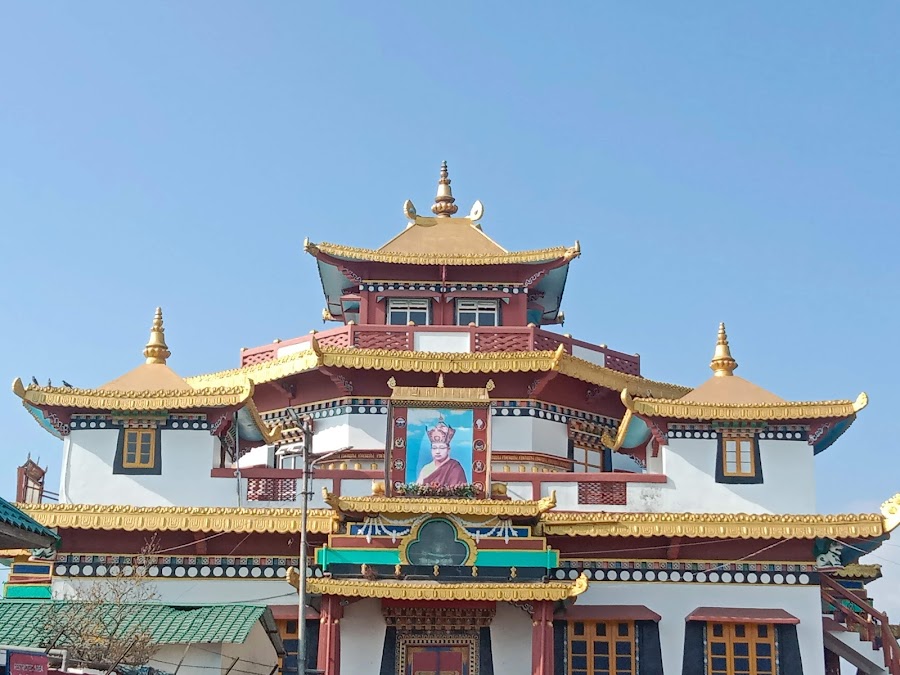
Zang Dhok Palri Phodang
Kalimpong, India
- Admire the three-dimensional mandala.
- Enjoy panoramic views of Kanchenjunga.
- Explore the monastery's intricate architecture.
- Learn about Tibetan Buddhist scriptures.
- Meditate in the peaceful environment.
- Photograph the stunning surroundings.
Known for:
Description:
Zang Dhok Palri Phodang Monastery, also known as Durpin Monastery, is a prominent Buddhist monastery located on Durpin Dara Hill in Kalimpong. It stands as one of the most significant religious centers in the region, offering a serene and spiritually enriching experience. The monastery is renowned for its stunning architecture, intricate murals, and a vast collection of Tibetan Buddhist scriptures. The highlight is the three-dimensional mandala on the upper floor, a rare and captivating sight. From the monastery grounds, visitors can enjoy panoramic views of Kalimpong town, the surrounding hills, and the majestic Kanchenjunga range. The peaceful ambiance and the vibrant Buddhist culture make it a must-visit destination for tourists seeking tranquility and cultural immersion. The monastery welcomes visitors of all faiths, providing a space for reflection and appreciation of Buddhist art and philosophy.
History:
The Zang Dhok Palri Phodang Monastery was consecrated in 1976 by Dudjom Rinpoche. It was built under the guidance of the late Dorje Chang Kyabje Dudjom Rinpoche Jigdral Yeshe Dorje. This Monastery holds significant religious importance, housing the Kangyur, a collection of Tibetan Buddhist scriptures consisting of over 100 volumes. These scriptures were brought here after the Chinese invasion of Tibet. The monastery serves as a vital center for Buddhist learning and practice, attracting monks and devotees from across the region. Over the years, it has become a symbol of Tibetan culture and resilience in exile, preserving and promoting Buddhist traditions in the face of adversity. The monastery continues to be an active religious institution, playing a crucial role in the spiritual life of the local community and beyond.